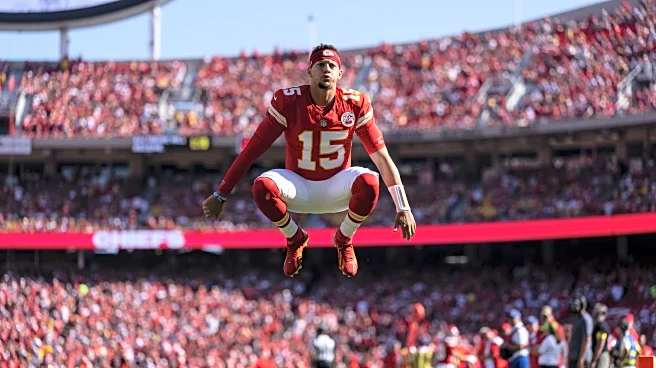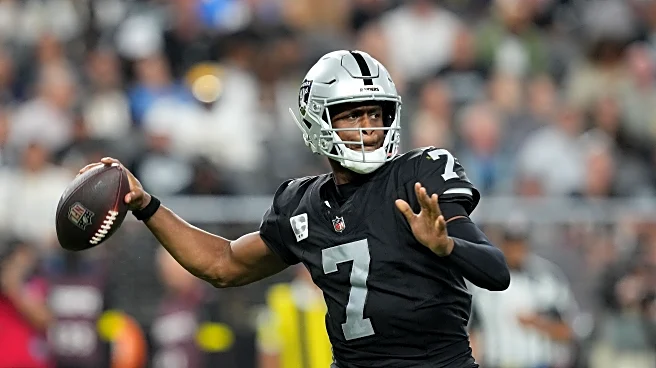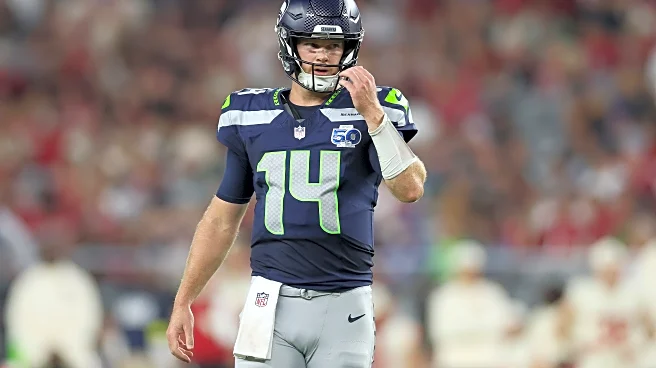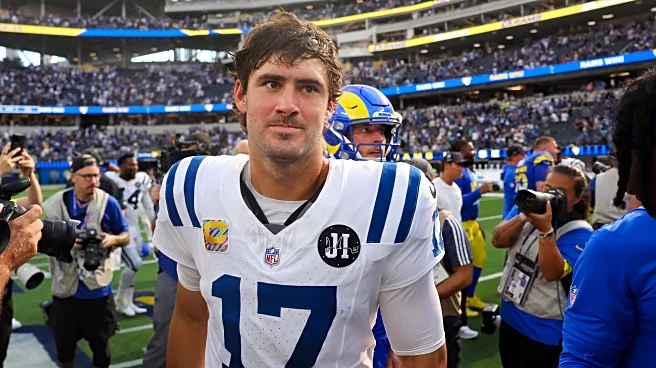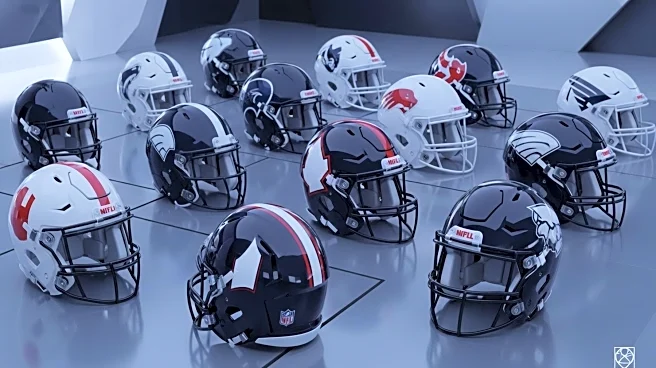What is the story about?
What's Happening?
The Seattle Seahawks have undergone a significant restructuring of their offensive lineup, trading away key players such as quarterback Geno Smith and wide receiver DK Metcalf, while allowing Tyler Lockett to leave via free agency. This overhaul was led by General Manager John Schneider, who also chose not to re-sign left guard Laken Tomlinson. Instead, the Seahawks drafted Grey Zabel, who has quickly become a standout performer. Zabel, playing as left guard, has been instrumental in improving the team's offensive line, contributing to better protection and an enhanced running game. His performance has been recognized in early-season rookie rankings, where he was listed as the seventh-best rookie in the NFL.
Why It's Important?
The restructuring of the Seahawks' offense and the emergence of Grey Zabel are crucial for the team's future success. Zabel's performance has helped the Seahawks improve their offensive metrics, including yards per play and rushing statistics. This development is significant as it addresses previous weaknesses in the team's offensive line, which struggled with protection and running game efficiency. The improvement in these areas could lead to better overall team performance and competitiveness in the league. The decision to invest in young talent like Zabel reflects a strategic shift towards building a more sustainable and effective offensive unit.
What's Next?
As the season progresses, the Seahawks will continue to rely on Grey Zabel and other new additions to solidify their offensive line. The team aims to further improve its rushing statistics and reduce the number of sacks allowed. Continued development and adaptation of the offensive strategy will be key to maintaining and enhancing the team's performance. The Seahawks will also monitor the progress of their rookies and make adjustments as necessary to optimize their lineup.
Beyond the Headlines
The Seahawks' decision to overhaul their offensive lineup and focus on young talent like Grey Zabel highlights a broader trend in the NFL towards investing in rookies and developing homegrown talent. This approach not only provides immediate benefits in terms of performance but also ensures long-term stability and growth for the team. The success of such strategies could influence other teams to adopt similar practices, potentially leading to a shift in how teams build and maintain their rosters.
AI Generated Content
Do you find this article useful?


